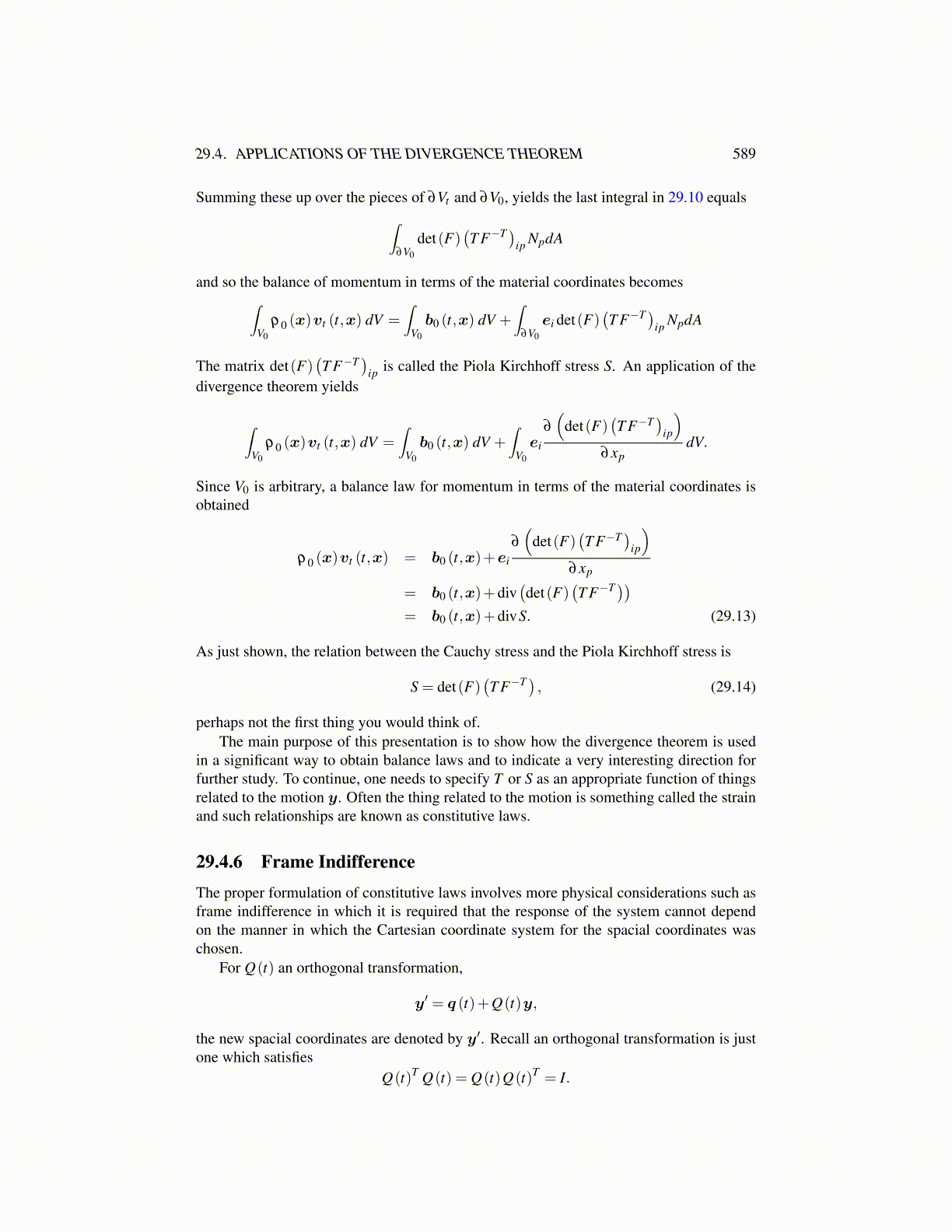
29.4. APPLICATIONS OF THE DIVERGENCE THEOREM 589
yr
ρ Rn−1
Taking slices at height y as shown and using that these slices have n− 1 dimensionalarea equal to αn−1rn−1, it follows
αnρn = 2
∫ρ
0αn−1
(ρ
2 − y2)(n−1)/2dy
In the integral, change variables, letting y = ρ cosθ . Then
αnρn = 2ρ
nαn−1
∫π/2
0sinn (θ)dθ .
It follows that
αn = 2αn−1
∫π/2
0sinn (θ)dθ . (29.17)
Consequently,
ωn =2nωn−1
n−1
∫π/2
0sinn (θ)dθ . (29.18)
This is a little messier than I would like.∫π/2
0sinn (θ)dθ = −cosθ sinn−1
θ |π/20 +(n−1)
∫π/2
0cos2
θ sinn−2θ
= (n−1)∫
π/2
0
(1− sin2
θ)
sinn−2 (θ)dθ
= (n−1)∫
π/2
0sinn−2 (θ)dθ − (n−1)
∫π/2
0sinn (θ)dθ
Hence
n∫
π/2
0sinn (θ)dθ = (n−1)
∫π/2
0sinn−2 (θ)dθ (29.19)
and so 29.18 is of the form
ωn = 2ωn−1
∫π/2
0sinn−2 (θ)dθ . (29.20)
So what is αn explicitly? Clearly α1 = 2 and α2 = π .
Theorem 29.4.2 αn = πn/2
Γ( n2+1)
where Γ denotes the gamma function, defined for
α > 0 by
Γ(α)≡∫
∞
0e−ttα−1dt.